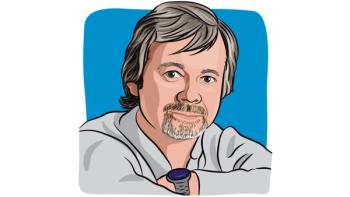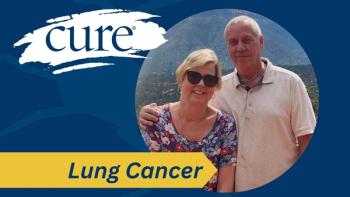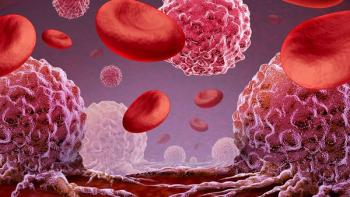
Bosulif Approved for Chronic Myeloid Leukemia
The FDA has approved Bosulif (bosutinib) as a first-line treatment for patients with Philadelphia chromosome-positive (Ph+) chronic myeloid leukemia (CML), based on findings from the phase 3 BFORE trial.
The FDA approved Bosulif (bosutinib) as a first-line treatment for patients with Philadelphia chromosome-positive (Ph+) chronic myeloid leukemia (CML), based on findings from the phase 3 BFORE trial.
In the open-label study, the major molecular response (MMR) at 12 months was 47.2 percent with Bosulif compared with 36.9 percent for Gleevec (imatinib). The complete cytogenetic response (CCyR) rate by 12 months was 77.2 percent with Bosulif compared with 66.4 percent for patients treated with Gleevec.
“Among patients with CML today, with the various treatment options available, it is important to recognize the unique needs of each of my CML patients and prescribe treatments that best meet those needs,” Jorge E. Cortes, M.D., The University of Texas MD Anderson Cancer Center, said in a statement. “The efficacy and distinct tolerability profile of Bosulif make it an important and useful treatment option for newly diagnosed CML patients.”
In the multicenter, multinational, open-label BFORE trial, patients with newly diagnosed chronic phase CML were randomly assigned to 400 mg once daily of Bosulif (268 patients) or 400 mg once daily of Gleevec (265 patients). Investigators lowered the Bosulif dose from 500 mg daily that was used in a previous study to reduce toxicity.
Patient characteristics were well balanced between the two arms. The median age of patients was 53 years (range, 18-84), with 18.5 percent being 65 years or older. The median time since diagnosis was 24 days. The Sokal risk group was intermediate and high for 40.2 percent and 20.9 percent of patients, respectively, and the ECOG performance score was 0 (70.6 percent) and 1 (29.2 percent). Extramedullary disease was present for 4.5 percent of patients.
MMR rates favored Bosulif at six and nine months. The six-month MMR was 35 percent with Bosulif and 18.3 percent with Gleevec and the nine-month MMR was 42.3 percent for Bosulif and 29.5 percent for Gleevec. The cumulative incidence function of MMR was more favorable with Bosulif, indicating a shorter time to response. At three months, Bosulif led to BCR-ACL transcript levels of less than 10 percent in 75.2 percent of patients compared with 57.3 percent of those in the Gleevec group.
In those with high Sokal scores, the 12-month MMR rate with Bosulif was 34.0 percent compared with 16.7 percent with Gleevec. In the intermediate group, the 12-month MMR was 44.9 percent and 39.1 percent with Bosulif and Gleevec, respectively. In the low Sokal group, the MRR rates were 58.1 percent and 46.3 percent, for Bosulif and Gleevec, respectively.
Efficacy was assessed in a modified intent-to-treat population of 487 Ph+ patients, 246 in the Bosulif group and 241 in the Gleevec group. The safety analysis included all patients treated.
The arms were well balanced. Median age was 52 years in the Bosulif arm (range, 18-84) and 53 years in the Gleevec arm (range, 19-84). Roughly 20 percent of patients in the both arms were in the Sokal high-risk group. In both groups, all patients had an ECOG performance score of 0 or 1.
At three months, after achieving BCR-ACL transcript levels of less than 10 percent, early response was significantly superior for Bosulif (75 percent vs 57 percent). At 12 months, 82 percent of patients in both groups completed the full course of treatment and 18 percent in both groups discontinued within 12 months. In the Bosulif arm, 13 percent discontinued due to treatment-related adverse events compared with 9 percent in the Gleevec arm.
More patients in the Bosulif arm experienced treatment-related dose interruptions (55 percent vs 36 percent) and reductions (35 percent vs 17 percent). The median dose intensity was 392 mg in the Bosulif group compared with 400 mg in the Gleevec arm. At 12 months, 82 percent of patients in both groups had completed the full course of treatment and 18 percent in both groups discontinued treatment within 12 months. In the Bosulif arm, 13 percent discontinued due to treatment-related adverse events (AEs) compared with 9 percent in the Gleevec arm.
All-grade diarrhea (70 percent vs 34 percent) and grade 3 or higher diarrhea (8 percent vs 1 percent) were significantly higher with Bosulif. Patients in the experimental arm were also much more likely to experience all-grade liver toxicity (40 percent vs 14 percent) and grade 3 or higher liver toxicity (24 percent vs 4 percent).
Bosulif was initially approved in the United States for the treatment of adult patients with Ph+ CML who have resistance or intolerance to prior therapy in September 2012. In Europe, Bosulif has conditional marketing authorization for the treatment of adult patients with Ph+ CML previously treated with one or more TKIs and for whom Gleevec, nilotinib and dasatinib are not considered. appropriate treatment options.





